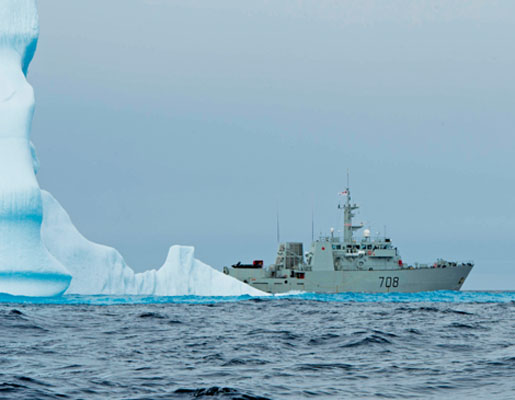In the last week of August, Chinese naval vessels appeared off the coast of Alaska at the same time as United States President Barack Obama was visiting and renaming North America’s highest peak, Mount McKinley, as Mount Denali. The Chinese ships plied a course just skirting the 12-nautical-mile territorial waters of the U.S., but were well within the United States’ 200-nautical-mile exclusive economic zone. The Chinese ships had every right to be there. U.S. navy ships sail along the territorial boundaries of most maritime states to assert long-standing U.S. assertions about freedom of innocent passage in international waters. The Russian navy does the same.
The story was virtually ignored in the Canadian press which was, quite naturally, caught up in the recent federal election and the pressing need to do something about the Syrian refugee crisis. But Canadians ought to take note because it is just a matter of time before Chinese vessels—naval, coast guard or research—will begin to appear off Canada’s Arctic coastal territorial waters. The Bering Strait that connects the North Pacific and the Gulf of Alaska to the Arctic Ocean is an international waterway and any ship on an innocent passage can use it to pass from the Pacific to the Arctic.

China is not an enemy of Canada. But Chinese ambitions in the Asia-Pacific region do clash with some close allies such as Japan, South Korea, Singapore, the Philippines and other countries and are increasingly challenging India and Australia. Canada has enough of a territorial waters disagreement with the United States over the Northwest Passage, however that waterway is defined, and does not need an additional problem with China or anyone else. Canada will face that challenge sooner rather than later.
At the same time, Russia is significantly increasing its Arctic military might. Russia has already laid claim to vast territories on the Arctic Ocean seabed including the North Pole, and the resource assets that lie beneath that ocean’s ice and waters. The Russian claims overlap Danish and Canadian claims to the seabed under the United Nations Convention on the Law of the Sea (UNCLOS). The United States has not ratified UNCLOS, and is thus not in a legal position to put forward its own claims. Not yet, anyway.
To back those claims, the Russians are renewing their Northern Fleet, which includes several heavy nuclear-powered icebreakers that can sail through most ice conditions, even in winter. The naval buildup is being matched by increasing air patrols, both offensive (probing North Atlantic Aerospace Defence Command readiness) and defensive. One source lists 56 military aircraft and 122 helicopters among Russia’s northern military assets. It also has at least a brigade of winter-trained and equipped marines and infantry. They have been doing combat training on a regular basis.
The Russian military buildup in the north has but one purpose. The Kremlin knows that it has nothing to fear regarding invasion of its north from any other country. No other nation can match Russia’s military resources there. The Russians, therefore, are declaring that no matter how the conflicting seabed claims of other nations may cross with theirs, possession is nine-tenths of the law and military power is one important aspect of possession. Here, too, there are future implications for Canada.
Our closest friend and ally, the United States, also has interests in the Arctic that conflict with ours. The most obvious is the difference of view over the status of the Northwest Passage. Canada claims the passage (of which there are several variations) as Canadian territorial waters; the United States asserts that the passage, like the Bering Strait, is an international waterway.
There are conflicting boundary claims over the Beaufort Sea and again, sub-seabed resources are at play. The United States has allowed its Arctic military capabilities to wither in the years since the Cold War, but its nuclear submarine fleet is still capable of operating in both summer and winter ice conditions and elements within the U.S. administration, especially the Coast Guard, are pushing for greater Arctic operating capability. Currently the U.S. is refurbishing one of its laid-up heavy icebreakers. Canada currently has none.
It speaks for itself that Canada is simply not in the military game in the Arctic, outclassed even by Denmark. It is also true that as much as Canadians love to sing about the true north strong and free, they are not prepared to pay a loonie more than is absolutely necessary to protect it. The answer, then, lies in the federal government initiating serious discussions with the United States to resolve the Beaufort Sea boundary and arrive at a definition of the Northwest Passage that both nations can live with. Canada, more than even the United States, needs to create a united front to serve the interests of both nations where those interests conflict with Russia and China.
With the election out of the way, it’s time for action.
Advertisement











